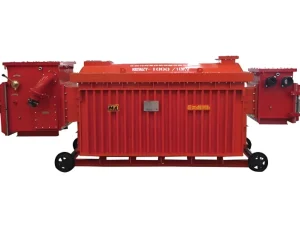
Introduction
Definition of special transformer
Special transformer, unlike standard counterpart, is custom-designed for specific industries or applications. They significantly deviate from typical configurations to meet unique needs such as non-standard voltages, high-frequency operations, or extreme environments. Consequently, these transformers cater to diverse industrial sectors by addressing specific challenges with tailored solutions. Moreover, their specialized design ensures optimal performance in scenarios where standard transformers would fail to meet the requirements. Thus, special transformers are indispensable in providing reliable and efficient power solutions across various unique and demanding applications.
Importance of special transformer in modern industries
Special transformer plays a vital role in modern industries by providing tailored solutions to unique power management and distribution challenges. These transformers offer several key advantages:
Customization: Offer tailored solutions for specific application requirements, providing voltage transformation, power conditioning, and impedance matching in diverse industrial processes and systems.
Efficiency: By optimizing transformer design and performance characteristics, they can enhance energy efficiency, minimize power losses, and improve overall system performance in industrial applications.
Reliability: Specialized transformer is engineered to endure challenging operational environments, extreme temperatures, and environmental factors, guaranteeing dependable performance and sustained longevity in vital industrial operations and facilities.
Safety: Equipped with advanced features and protective measures, a special transformer enhances safety and mitigates potential hazards like overcurrent, overvoltage, and short circuits. This ensures the protection of equipment, personnel, and property in industrial settings.
Innovation: Driving innovation and technological advancement in various industries by enabling the development of new and emerging applications, such as renewable energy integration, electric vehicle charging infrastructure, and advanced manufacturing processes.
Applications
Power generation and distribution
- Voltage regulation and transmission line optimization through step-up and step-down transformers.
- Connecting power plants to the grid and distributing electricity to end-users using generator transformers.
- Delivering electricity to residential, commercial, and industrial consumers at appropriate voltage levels via distribution transformers.
Industrial applications
- Converting alternating current (AC) to direct current (DC) in industrial rectifier systems using rectifier transformers.
- Supplying high-voltage power to electric arc furnaces used in steelmaking and metal processing with furnace transformers.
- Powering variable frequency drives (VFDs) and controlling the speed and torque of electric motors in industrial machinery and equipment with motor drive transformers.
Renewable energy systems
- Stepping up generated voltage from wind turbines to grid-compatible levels with wind turbine transformers.
- Converting direct current (DC) from solar panels into alternating current (AC) for grid integration using solar inverter transformers.
- Managing power flow and voltage levels in battery storage systems for renewable energy integration with energy storage system transformers.
Transportation
- Converting high-voltage AC power from overhead lines or substations into lower-voltage AC power for electric trains and locomotives with traction transformers.
- Converting AC power from charging stations into DC power for electric vehicles (EVs) using onboard chargers, which include isolation transformers.
Electronics and telecommunications
- Signal isolation and impedance matching in audio amplifiers, radio receivers, and communication systems.
- Impedance matching and signal coupling in RF (radio frequency) circuits, microwave systems, and wireless communication devices with high-frequency transformers.
- Converting AC mains voltage to lower-voltage AC or DC power for electronic devices, such as computers, televisions, and consumer electronics, using power supply transformers.
In summary, these transformers find applications across various sectors, including power generation, industry, renewable energy, transportation, electronics, and telecommunications, where they perform critical functions to support infrastructure development, energy efficiency, and technological innovation.